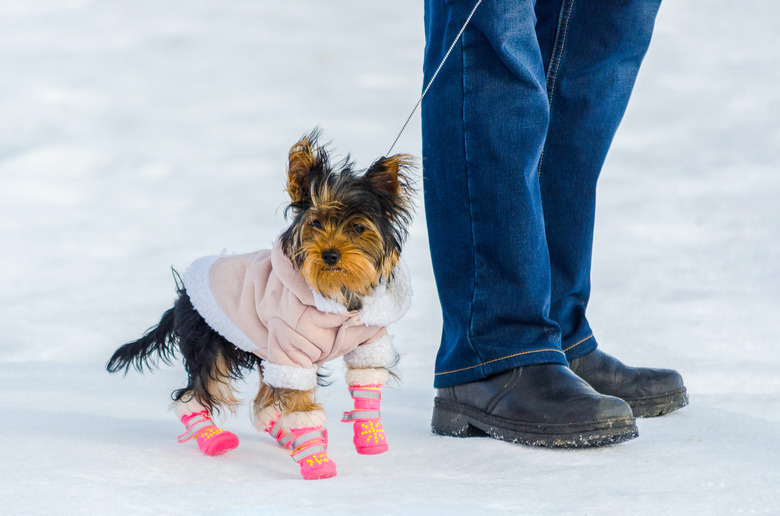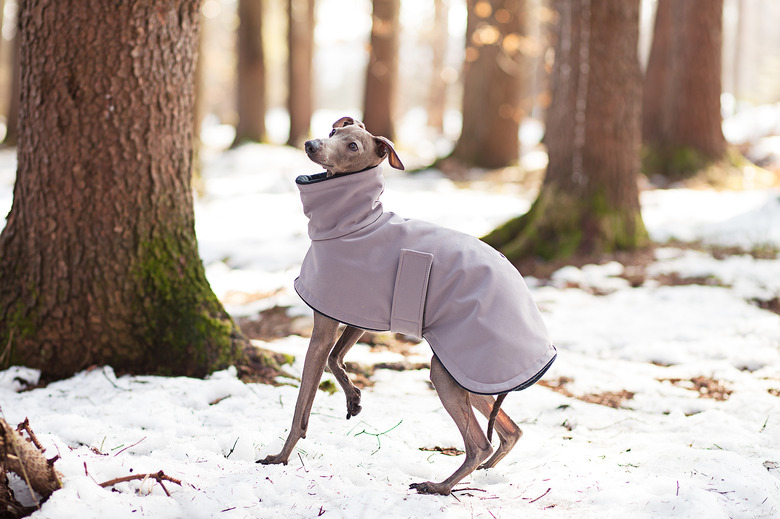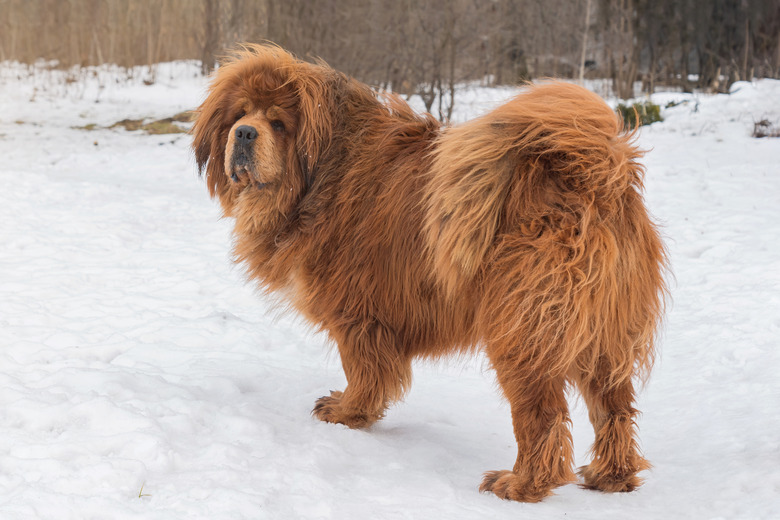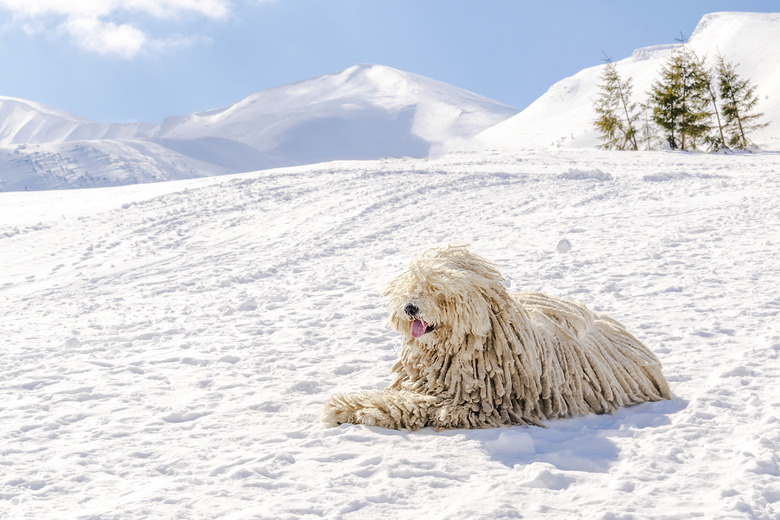Winter Safety Tips For Protecting Your Dog Against Cold Weather, Hypothermia And Frostbite
We may receive a commission on purchases made from links.
Winter is a fun time for pet owners and dogs to stay inside and be cozy. But nature calls and your dog needs to go outside for necessary potty breaks and exercise. But, there are important winter safety considerations to keep in mind.
Keeping dogs safe in winter
Keeping dogs safe in winter
Your individual dog's breed and comfort will dictate what kind of precautions you need to in the wintertime. Other influencing factors will depend on where you live and how cold it gets. Playing in the snow can be fun, and there are a variety of ways to protect your dog while doing so. However, you should also consider the following factors.
- Consider your dog's age and health. Puppies and senior dogs often struggle in cold weather. Certain medical conditions are made worse by cold weather. Dogs with arthritis for example may experience more pain flares. Talk with your dog's veterinarian about your dog's health and winter weather safety measures.
- Set a time limit. When it is especially cold, you will want to avoid long walks with your dog. Supervise them while they are outside and make sure they aren't getting too chilly.
- Observe where your dog is walking. Be sure to keep your dog away from antifreeze drips and spills, as well as road rock salts. Bot of which are toxic to dogs.
Protecting against cold weather
Protecting against cold weather
During the winter season, it's important to take precautions to keep your dog safe and warm when you take them outside. Depending on the weather condition, your dog's coat type, and breed you may want to purchase a winter coat for them. You may also want to begin conditioning your dog to be comfortable with wearing boots.
Winter safety tips for protecting your dog against cold weather
Winter safety tips for protecting your dog against cold weather
The cold weather can pose a variety of safety issues for dogs. To protect your dog from the effects of cold weather it's important to take precautions to keep your dog warm, dry, and protected from the harsh temperatures.
- Keep their hair long. It's important to keep your dog well groomed, but during the winter consider keeping your dog's fur longer. Cutting or shaving down your dog's fur can make them much more susceptible to being cold. Your dog's coat is designed to help insulate the body and removing that fur can make your dog colder faster.
- Use booties. Ice can be sharp and cut your dog's paws, and the cold snow can also be irritating to your dog's sensitive feet. Although pet-safe deicer and ice melts exist, regular chemical deicer and salt are often put on streets and sidewalks — both of which can burn your pet's paws. To protect your dog's feet, dress them in some warm and protective dog boots.
- Be aware of the temperature. Be sure to check the temperature outside before leaving the house. When temperatures are below freezing, you'll want to limit your dog's time outside. Instead, consider playing indoor games with your dog.
- Warm your dog up when you get home. When you get home from playing or walking in the snow, take off your dog's coat and booties right away. Keep a dry towel by the door so you can dry your dog right away. Be sure to remove any snow and ice balls that have built up on your dog's legs or body. This will help your dog to get warmer faster. If your dog isn't wearing boots, you'll also want to use pet wipes to wipe any deicer — so they don't lick it off.
- Consider your dog's diet. When dogs are outside, they burn more calories. If your dog is out regularly in the cold, you may want to change their diet. Be sure to talk with your veterinarian first about what is best for your specific dog's needs.
- Signs of hypothermia and frostbite. One of the big concerns of being outside in the snow and cold weather is the risk of hypothermia for dogs. A normal body temperature for dogs is 100.5 to 102.5 degrees Fahrenheit. Hypothermia begins when a dog's body temperature dips below this. Hypothermia symptoms include:
- lethargy
- shivering
- difficulty breathing
- lowered heart rate
If you notice any symptoms of hypothermia, it's important to get your dog indoors right away to raise their body heat. Contact your veterinarian or local emergency veterinary clinic right away.
Another risk in the cold can be frostbite. Signs of frostbite in dogs include skin that is:
- discolored
- swollen
- blistered
If you notice any of these symptoms of frostbite you should do the following:
- Get your dog to a warm place as quickly as possible.
- Wrap your dog's body in warm towels or blankets.
- Contact a veterinarian or a local emergency veterinary hospital right away.
Winter safety tips for puppies
Winter safety tips for puppies
Puppies are more sensitive to temperature changes than adult dogs. They get cold more quickly than adult dogs and are more susceptible to hypothermia. Be sure to limit how long your puppy is outside. This is especially important for small-breed puppies, and short-haired dogs.
Keeping your dog safe in the snow
Keeping your dog safe in the snow
When running in the snow, dogs can become overly tired and cold quickly. Being out in the snow can become painful for your dog's paws. After playing in the snow, or walking on ice a dog's paws can become itchy, cracked, and dry.
Be sure to dry your dog's feet when they come back inside and consider using a paw pad moisturizer if you notice your dog's feet are dry. During the cold weather, many people put out rock salt or chemical deicer. Both can burn your dog's paws. Boots can help protect your dog's feet while outside walking or playing in the snow.
Although many dogs enjoy playing in the snow, it can also be dangerous for them. Dogs laying in snow can also get cold and wet quickly, which can increase their risk of hypothermia. Keep your dog away from frozen rivers and lakes as well to prevent them from having an accident and falling in.
The bottom line
The bottom line
This winter, be thoughtful about how much time you and your dog spend outside. It's important to be prepared. Be especially careful with puppies and senior dogs. They are susceptible to cold weather and extreme cold. Take every precaution to prevent hypothermia and frostbite by limiting time outside. You may also want to get your dog a coat and boots. Keep your dog's fur longer to protect them from the cold.



